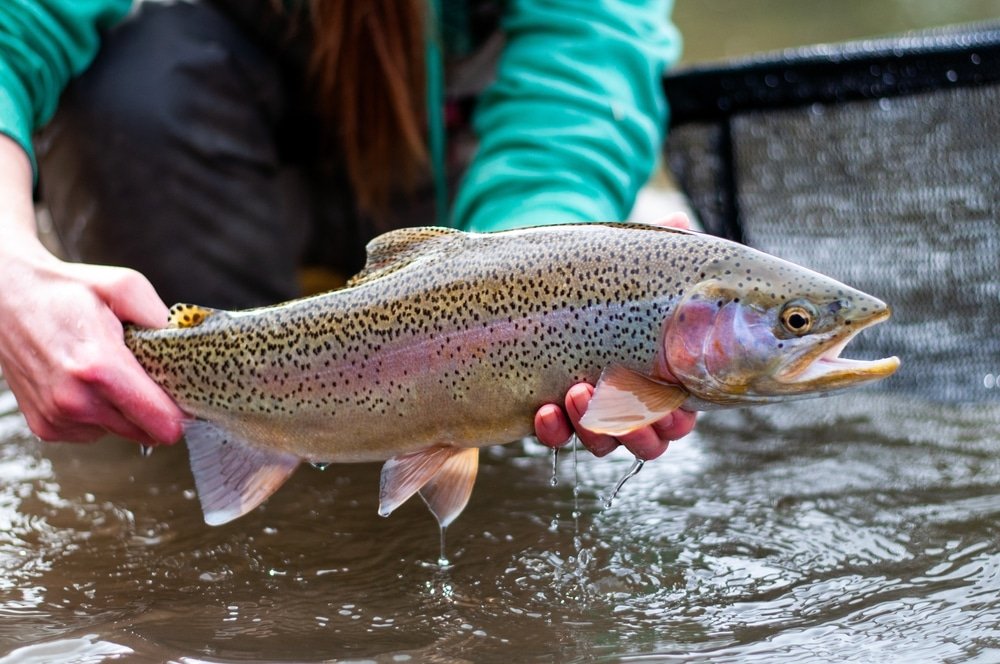Best Fishing Line for Trout – Our Top 3 Picks!
Fishing for trout can be rewarding, if you have the right line. The best fishing line for trout is the vital connection between the angler and the fish. It affects casting, lure presentation, and hooksets. With so many different types of fishing lines available, which one suits your trout fishing needs?

Trout are known for their keen senses and fighting abilities, so selecting an appropriate fishing line is paramount. A well-suited line enhances casting accuracy and lure control and provides the strength to handle larger trout. It also offers sensitivity to detect subtle strikes and durability for navigating underwater obstacles.
Types of Fishing Lines
- Monofilament Fishing Lines: These versatile and affordable lines offer good knot strength, manageability, and stretch for absorbing shocks during fights.
- Fluorocarbon Fishing Lines: Known for exceptional invisibility underwater, they’re ideal for clear or pressured waters. They have low stretch and abrasion resistance.
- Braided Fishing Lines: These lines are exceptionally strong, with minimal stretch and high sensitivity. They’re great for casting distance and durability in rough environments.
- Hybrid Fishing Lines: These combine the best attributes of different lines, offering improved knot strength and invisibility.
Monofilament Fishing Lines
Monofilament lines are flexible, offer smooth casting, and have excellent knot strength. They’re also forgiving during fights, reducing the risk of breakage. They float, making them suitable for topwater presentations.
Advantages of Monofilament Lines
- Affordability
- Good abrasion resistance
- Shock absorption
Disadvantages of Monofilament Lines
- A larger diameter affects the casting
- It is less invisible than fluorocarbon
Recommended Monofilament Lines
- For general trout fishing: 2-6 lb test, brands like Berkley Trilene XL or Stren Original
- For larger trout or steelhead: 8-12 lb test, brands like Maxima Ultragreen or Seaguar Blue Label
Fluorocarbon Fishing Lines
Fluorocarbon lines are nearly invisible underwater, making them ideal for clear waters. They offer low stretch, sensitivity, and abrasion resistance
Advantages of Fluorocarbon Lines
- Invisibility
- Sensitivity
- Abrasion resistance
Disadvantages of Fluorocarbon Lines
- Higher cost
- Reduced buoyancy
- Potential visibility
Recommended Fluorocarbon Lines
- For invisibility and sensitivity, use Seaguar InvizX or Sunline Super FC Sniper
- For strength: Berkley Vanish or P-Line Tactical Fluorocarbon
Braided Fishing Lines
Braided lines are exceptionally strong and sensitive, allowing for longer casts and control. They excel in rough environments
Advantages of Braided Lines
- Strength
- Casting distance
- Durability
Disadvantages of Braided Lines
- Visibility
- Lack of stretch
Recommended Braided Lines
Hybrid Fishing Lines
Hybrid lines combine the strengths of different materials, offering improved knot strength and reduced visibility compared to pure fluorocarbon
Advantages of Hybrid Lines
- Enhanced knot strength
- Versatility
Disadvantages of Hybrid Lines
- Slightly less invisible than pure fluorocarbon
Recommended Hybrid Lines
Specialized Trout Fishing Lines
For fly fishing, consider weight forward (WF), double taper (DT), or shooting taper (ST) fly lines. Each type has specific advantages for different casting styles. Read more in our blog, The Best Fishing Line for Trout.
Conclusion – Best Fishing Line for Trout
Choosing the right fishing line for trout is vital for success. Factors like water conditions, trout behavior, casting requirements, and personal preferences should guide your decision.
Explore reputable brands such as Rio Products and Scientific Anglers to make an informed choice. Match your line with your rod and consider factors like strength, durability, and invisibility underwater for a fruitful trout fishing experience. Happy fishing!



